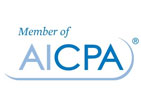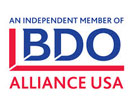External auditors spend a lot of time during fieldwork evaluating how businesses report work-in-progress (WIP) inventory. Here’s why this warrants special attention and how auditors evaluate whether WIP estimates seem reasonable.
Auditor independence is the cornerstone of the accounting profession. Auditors’ commitment to follow the standards set forth by the American Institute of Certified Public Accountants (AICPA), the Securities and Exchange Commission (SEC), and the International Auditing and Assurance Standards Board (IAASB) ensures stakeholders can trust that audited financial statements present an accurate picture of the performance and condition of companies.
Posted in Audit & Assurance
Inventory Management Systems: What's Right for Your Business?

Posted by Aaron K. Waller, CPA on Feb 05, 2024
If your business has significant inventory on its balance sheet, it can be costly. The carrying costs of inventory include warehousing, salaries, insurance, taxes, and transportation, as well as depreciation and shrinkage. Plus, tying up working capital in inventory detracts from other strategic investment opportunities.
Posted in Audit & Assurance
As audit season begins for calendar-year entities, it’s important to review issues that may arise during fieldwork. One common issue is materiality. This concept is used to determine what’s important enough to be included in — and what can be omitted from — a financial statement. Here’s how materiality is determined and used during an external financial statement audit.
Posted in Audit & Assurance
As year-end approaches, it’s time for some calendar-year businesses to perform physical inventory counts. This activity is more than a time-consuming chore; it’s an opportunity to improve your company’s operational efficiency. Here are some best practices as you prepare to count your inventory, as well as guidance on how to get more from these counts.
Posted in Audit & Assurance
Is your business constantly replacing its tools and small equipment? Certain items that can fit in a backpack, pocket, or even the armrest of a vehicle — such as power tools, hard hats, iPads, and RFID readers — have a tendency to “walk away” from job sites, warehouses, and offices. However, the cost of lost, damaged, and stolen items can quickly erode profits and cash flow. An effective tracking system can help remedy this problem by making workers more accountable.
Posted in Audit & Assurance
FASB Approves Updated Rules for Disclosing Income Taxes

Posted by Melissa Motley, CPA on Oct 05, 2023
On August 30, 2023, the Financial Accounting Standards Board (FASB) unanimously voted to finalize its proposed improvements to the disclosure rules for income taxes. Here’s what’s changing and when those changes are effective.
Posted in Audit & Assurance
It can be difficult for business owners to navigate the tax code and monitor tax law developments. One area of special concern is financial reporting for uncertain tax positions (UTPs). Here’s some insight to help clarify matters.
Posted in Audit & Assurance
Traditional business models in many sectors have been disrupted by the COVID-19 pandemic, geopolitical uncertainty, rising costs, and falling consumer confidence. If your company is planning a major strategic shift this year, management may need to comply with the updated accounting rules for reporting discontinued operations that went into effect in 2015.
Posted in Audit & Assurance
Optimizing the Internal Audit Process for Greater Efficiency

Posted by Melissa Motley, CPA on May 11, 2023
In the current economic environment, companies are looking for ways to gain efficiencies within their Internal Audit processes and procedures. The use of Technology and Data Analytics have transformed the Internal Audit function by enabling:
Posted in Audit & Assurance

















